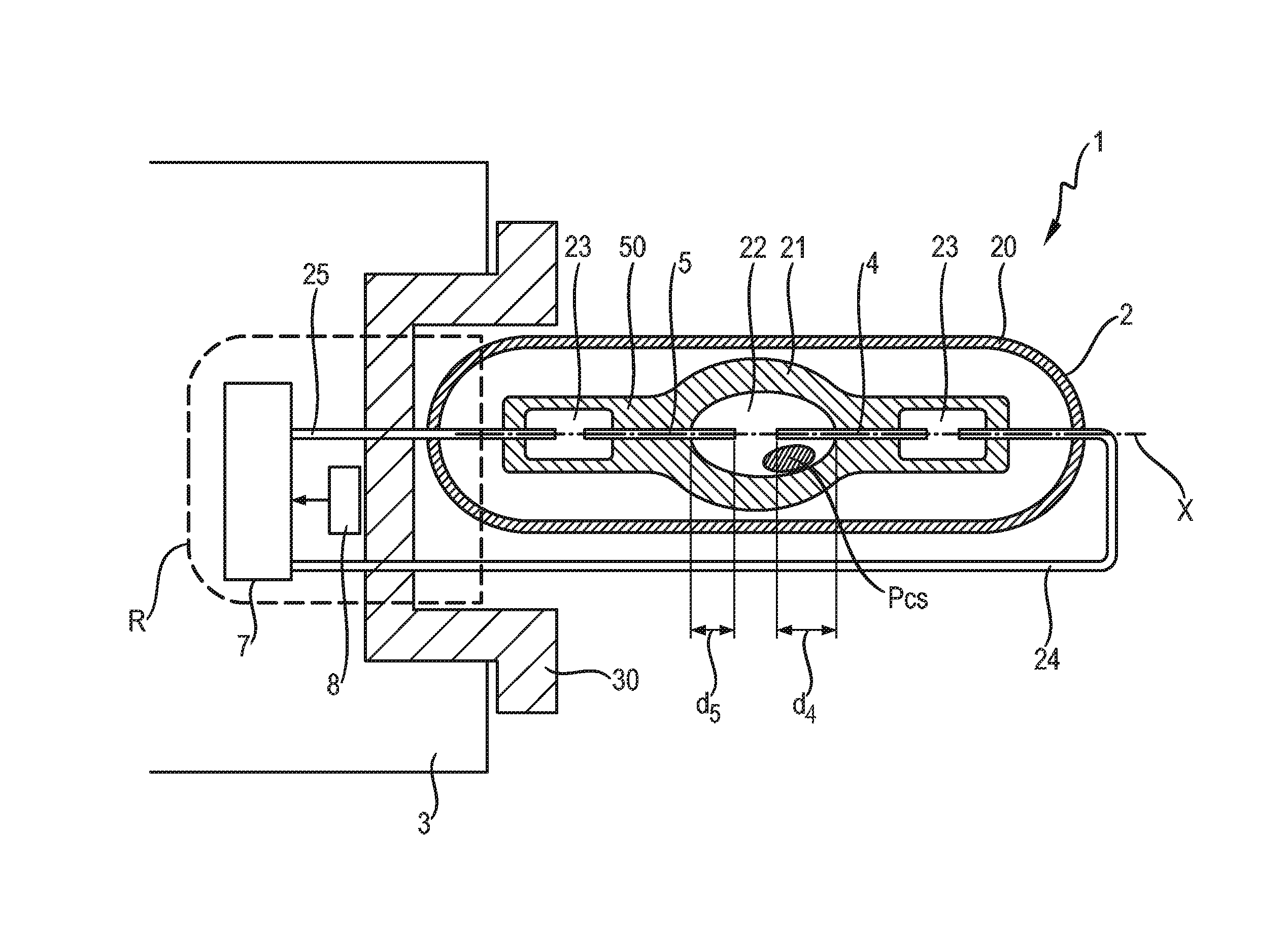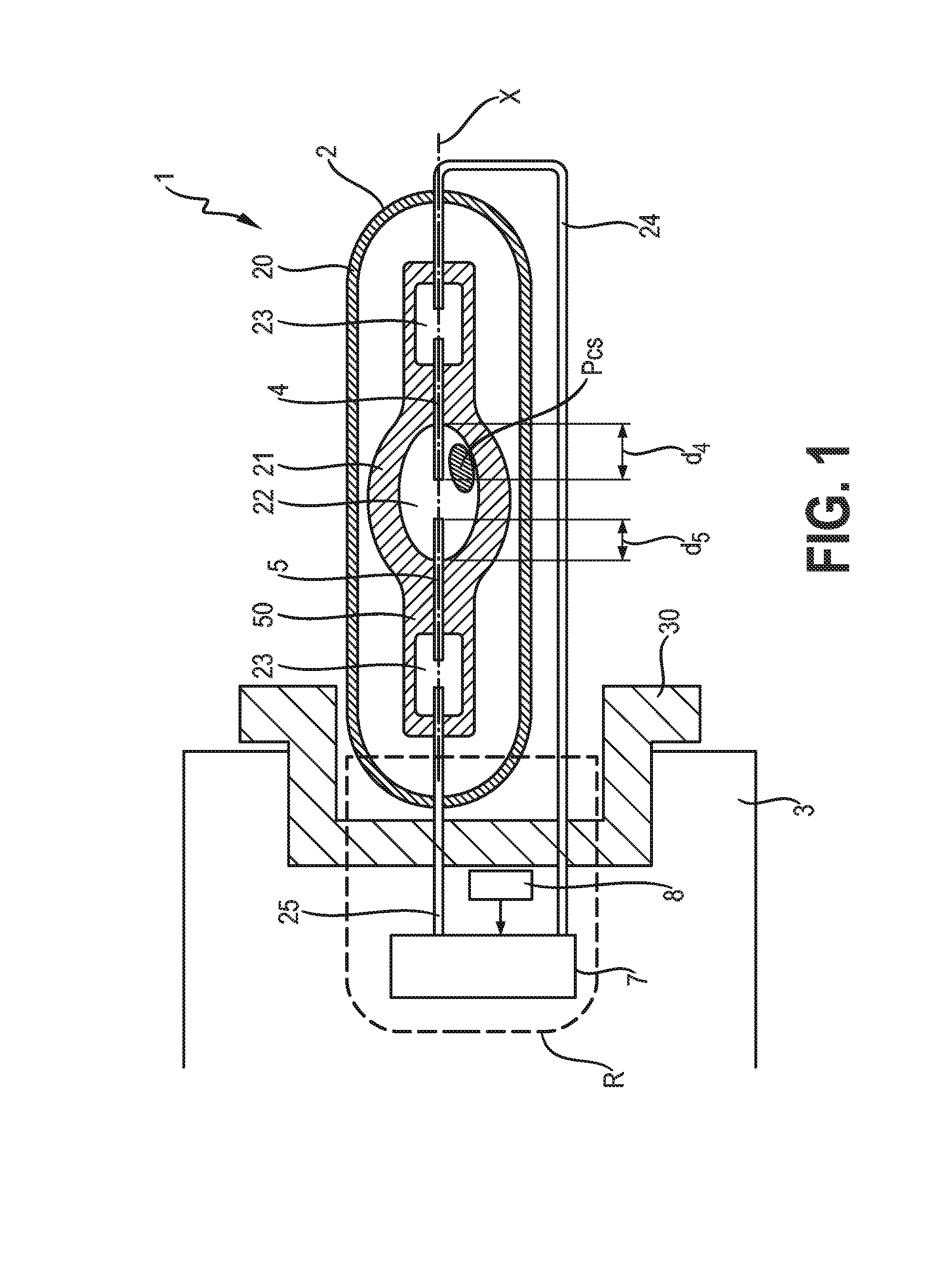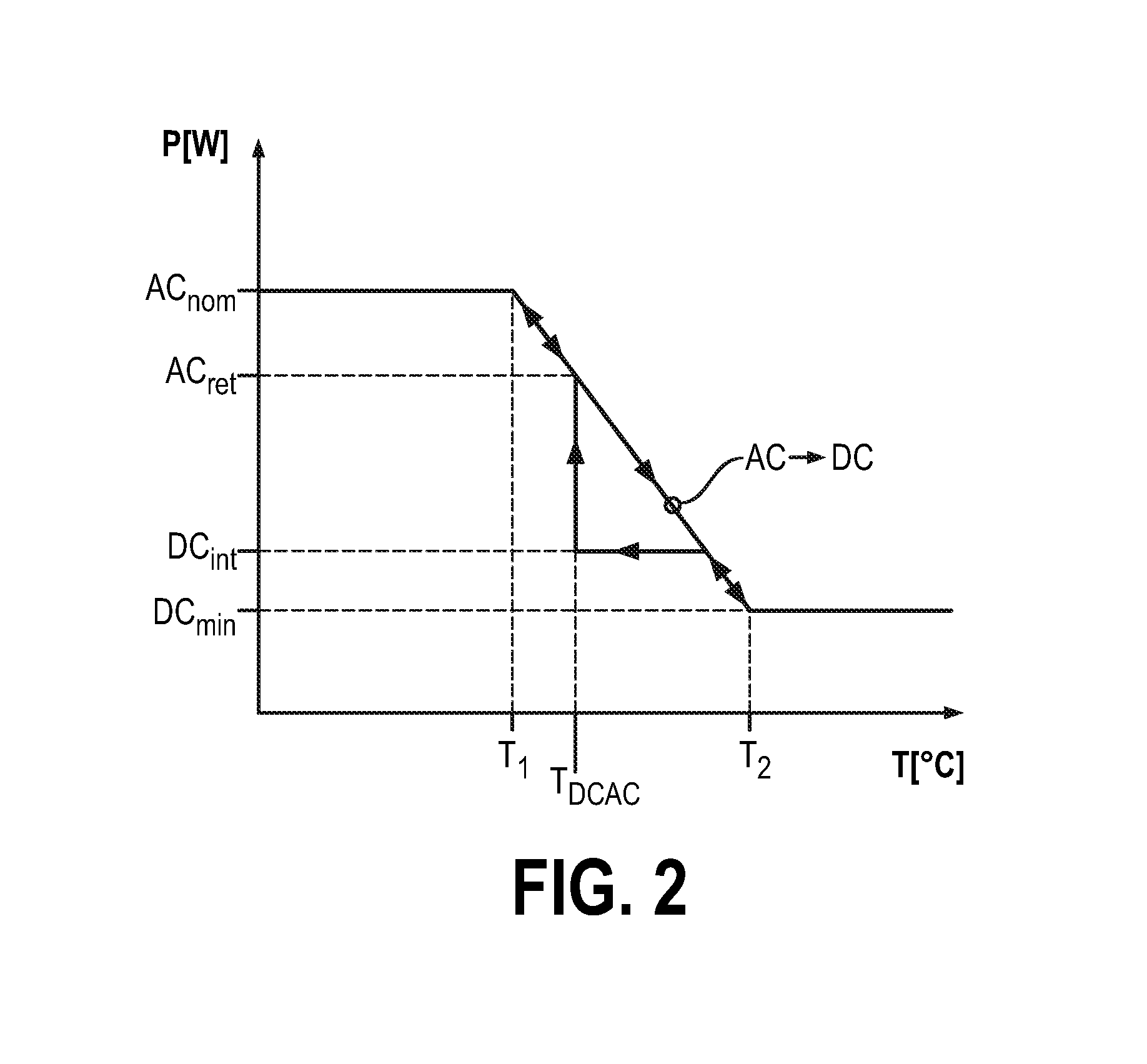Method of driving a gas-discharge lamp
a technology of gas-discharge lamps and drivers, which is applied in the direction of gas-filled discharge tubes, electric discharge lamps, non-electron-emitting electrodes, etc., can solve the problems of reducing the lifetime of the driver (and therefore the lifetime of the lamp itself), affecting the efficiency of the lamp, and reducing the power of the lamp. , to achieve the effect of reducing the effect of power consumption, reducing the effect of efficacy and maintaining the effect of the lamp
- Summary
- Abstract
- Description
- Claims
- Application Information
AI Technical Summary
Benefits of technology
Problems solved by technology
Method used
Image
Examples
Embodiment Construction
[0048]FIG. 1 shows a gas-discharge lamp 1 according to an embodiment of the invention. The lamp 1 comprises a burner 2 mounted in a base 3. In an automotive front lighting arrangement, such a lamp 1 is generally mounted horizontally in a housing so that the longitudinal axis X of the burner 2 is essentially horizontal. The burner 2 comprises an outer glass vessel 20 enclosing an inner discharge vessel 21. The discharge vessel 21, usually a quartz glass bulb 21, comprises a pair of electrodes 4, 5 arranged along the optical axis X to face each other across a short gap in a discharge chamber 22, which is sealed by two pinches 40, 50. The exposed length d4 of the outer electrode 4 is slightly longer than the exposed length d5 of the inner electrode 5. This can be the result of a deliberate ‘shifting’ of the electrodes along the longitudinal axis of the burner to offset the gap that separates the front faces of the electrodes towards the base of the lamp. Alternatively, the longer expos...
PUM
 Login to View More
Login to View More Abstract
Description
Claims
Application Information
 Login to View More
Login to View More - R&D
- Intellectual Property
- Life Sciences
- Materials
- Tech Scout
- Unparalleled Data Quality
- Higher Quality Content
- 60% Fewer Hallucinations
Browse by: Latest US Patents, China's latest patents, Technical Efficacy Thesaurus, Application Domain, Technology Topic, Popular Technical Reports.
© 2025 PatSnap. All rights reserved.Legal|Privacy policy|Modern Slavery Act Transparency Statement|Sitemap|About US| Contact US: help@patsnap.com



